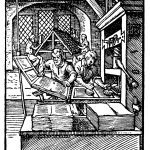
Beautiful websites can feel like a masterpiece. Sleek layouts, stunning visuals, and modern animations are designed to captivate and impress. However, the hard truth is that many aesthetically pleasing websites fail at their primary purpose: converting visitors into customers. While visually appealing designs can create a strong first impression, they often neglect functionality, usability, and user experience, which are crucial for driving conversions.
This article explores why beautiful websites often fail to convert, dives into common design pitfalls, and provides actionable strategies to balance aesthetics with performance. Whether your website looks fantastic but underdelivers or you’re planning a redesign, this guide will help you build a website that’s as effective as it is attractive.
What Makes a Website “Beautiful”?
Characteristics of a Beautiful Website
A beautiful website typically incorporates cutting-edge design trends like minimalist layouts, bold typography, vibrant color schemes, and engaging animations. These elements aim to create an unforgettable visual experience and establish a strong brand identity. While these attributes are important, they often focus on impressing visitors at the expense of usability. For example, a homepage may look stunning but confuse users by hiding critical navigation elements or burying calls-to-action (CTAs).
Beautiful websites often emphasize form over function, prioritizing visual elements over the seamless user journey. True beauty in web design, however, lies in striking a balance—creating a website that is visually appealing yet user-friendly and conversion-focused.
Why Businesses Prioritize Aesthetics
Many businesses invest heavily in aesthetics, believing that a polished design enhances credibility and establishes trust. The rationale is simple: a professional-looking website reflects the quality of the brand. While this is partly true, over-prioritizing visuals can result in websites that frustrate users or fail to guide them toward meaningful actions.
For example, a luxury hotel might invest in breathtaking videos and animations but lose potential customers if the booking form is hard to find. Similarly, an e-commerce brand with a trendy design might experience low sales if its checkout process is confusing or inaccessible.
The Conversion Problem: Why Beautiful Websites Fail
1. Aesthetic Overload Hurts Usability
A visually complex website can overwhelm users, making navigation difficult and confusing. Research shows that users form their first impressions of a website in just 50 milliseconds, and clarity is far more important than visual appeal during this critical window. For instance, a website filled with flashy animations and complex layouts can distract users from the core message or desired action.
Example: A SaaS company used intricate designs and animations to showcase its software but noticed users struggled to find the “Sign Up” button. Simplifying the layout and placing the CTA prominently increased sign-ups by 35%.
2. Poorly Designed or Hidden CTAs
CTAs guide users toward specific actions, such as signing up, purchasing a product, or downloading a resource. However, aesthetically driven websites often bury CTAs in visually dominant designs, making them hard to locate or unnoticeable. In addition, generic language like “Click Here” fails to inspire action or urgency.
Example: A fashion retailer struggled with high cart abandonment rates due to CTAs that blended into the site’s color scheme. Updating CTA buttons with bold, contrasting colors and action-driven language like “Shop Now” increased conversions by 20%.
3. Slow Loading Speeds
High-resolution images, animations, and videos can severely impact loading speeds. A one-second delay in load time reduces conversions by 7%, with mobile users being particularly impatient. Visitors expect a site to load in under three seconds; anything longer risks abandonment.
Example: A travel booking platform noticed a significant drop in mobile engagement due to slow load times caused by oversized images and JavaScript-heavy widgets. Optimizing these elements improved loading speeds and increased mobile bookings by 30%.
4. Ignoring Mobile Responsiveness
With over 50% of global web traffic coming from mobile devices, mobile responsiveness is essential for modern websites. Beautiful desktop designs that don’t translate well to smaller screens lead to frustrating user experiences. Non-responsive websites often require users to zoom, scroll horizontally, or deal with misaligned elements, driving them away.
Example: An e-commerce brand redesigned its site with mobile users in mind, creating a simplified interface with larger CTAs and touch-friendly navigation. This led to a 25% increase in mobile purchases within three months.
5. Neglecting User Experience (UX)
Many beautiful websites fail because they prioritize aesthetics over functionality. Poor navigation, inaccessible designs, and cluttered layouts frustrate users, causing them to leave. A strong user experience ensures visitors can easily find information, complete tasks, and feel satisfied with their interaction.
Example: Airbnb combines clean, elegant design with an intuitive user journey, making it easy for users to find accommodations. This balance between form and function is key to their success.
The Psychology of Conversion: What Really Drives Action?
A beautiful website appeals to a user’s emotions, but conversions require addressing both emotional and logical triggers. Here are the key psychological factors that drive user actions:
- Clarity: Users need to understand your website’s purpose and benefits instantly. Clear messaging, simple navigation, and visible CTAs ensure users know what to do next without confusion.
- Urgency: Limited-time offers, countdown timers, and action-driven language create a sense of urgency, compelling users to act quickly.
- Trust: Building trust through testimonials, secure payment badges, and transparent policies reassures users and reduces hesitation.
- Value: Users must perceive clear, tangible benefits from engaging with your website, such as solving a problem, saving money, or improving their lives.
How to Strike the Right Balance: Beautiful and Effective Websites
1. Prioritize Usability Over Aesthetics
A functional website is more valuable than one that only looks good. A clean, intuitive layout ensures users can easily find information and take desired actions without confusion.
Tips:
- Use a consistent layout with clear navigation paths and avoid clutter that distracts users. A well-structured design ensures visitors can focus on key elements like CTAs and product details.
- Stick to a limited color palette to highlight important elements, such as CTA buttons or headlines, without overwhelming users. Simplicity often leads to better comprehension.
- Choose fonts that are highly legible across devices. Decorative or overly artistic fonts may look appealing but hinder readability, especially on smaller screens.
2. Optimize for Speed
Fast-loading websites keep users engaged and reduce bounce rates. Speed is not just a performance metric but a critical factor for conversions and SEO rankings.
Strategies:
- Compress images and videos to reduce file sizes without sacrificing quality. Tools like TinyPNG or Squoosh can help streamline media.
- Minimize JavaScript and CSS files by combining and compressing them. This reduces server requests and speeds up page load times.
- Use tools like Google PageSpeed Insights or GTmetrix to identify and fix speed bottlenecks. Regular audits ensure your site remains optimized.
3. Enhance Your CTAs
CTAs are the lifeblood of conversions, guiding users toward meaningful actions. They should stand out visually, convey urgency, and provide clear direction.
Best Practices:
- Use bold, contrasting colors to make CTAs pop against the background, ensuring they are immediately visible. Placement should follow natural eye movement, such as the top center or after compelling content.
- Write actionable, benefit-driven copy. Replace generic phrases like “Submit” with more engaging options like “Get My Free Trial” or “Start Saving Today.”
- Place CTAs strategically throughout the user journey. Ensure they appear in high-visibility areas, such as above the fold, in the middle of engaging content, or at the end of blog posts.
4. Leverage Data to Improve Design
Analyzing user behavior helps identify areas for improvement and ensures your design evolves to meet user needs.
Tips:
- Use heatmaps to identify which parts of your website users interact with most and optimize underperforming areas. For example, move underutilized CTAs to higher-traffic sections.
- Conduct A/B testing to compare different design elements, such as headlines, layouts, or CTA placements. Choose winning variations to refine your site incrementally.
- Track metrics like bounce rates, time on page, and conversion rates. These insights reveal whether users are engaging with your content or leaving prematurely.
Key Takeaways
- Beautiful websites often fail to convert because they prioritize aesthetics over usability, speed, and user experience. Clear navigation, fast loading times, and mobile responsiveness are critical for keeping users engaged.
- Conversion-driven designs focus on balancing visual appeal with functionality. A beautiful website should serve as a tool for guiding users toward meaningful actions, not just impressing them visually.
- Using tools like heatmaps, A/B testing, and analytics allows businesses to continuously refine their websites for better engagement and conversions.




